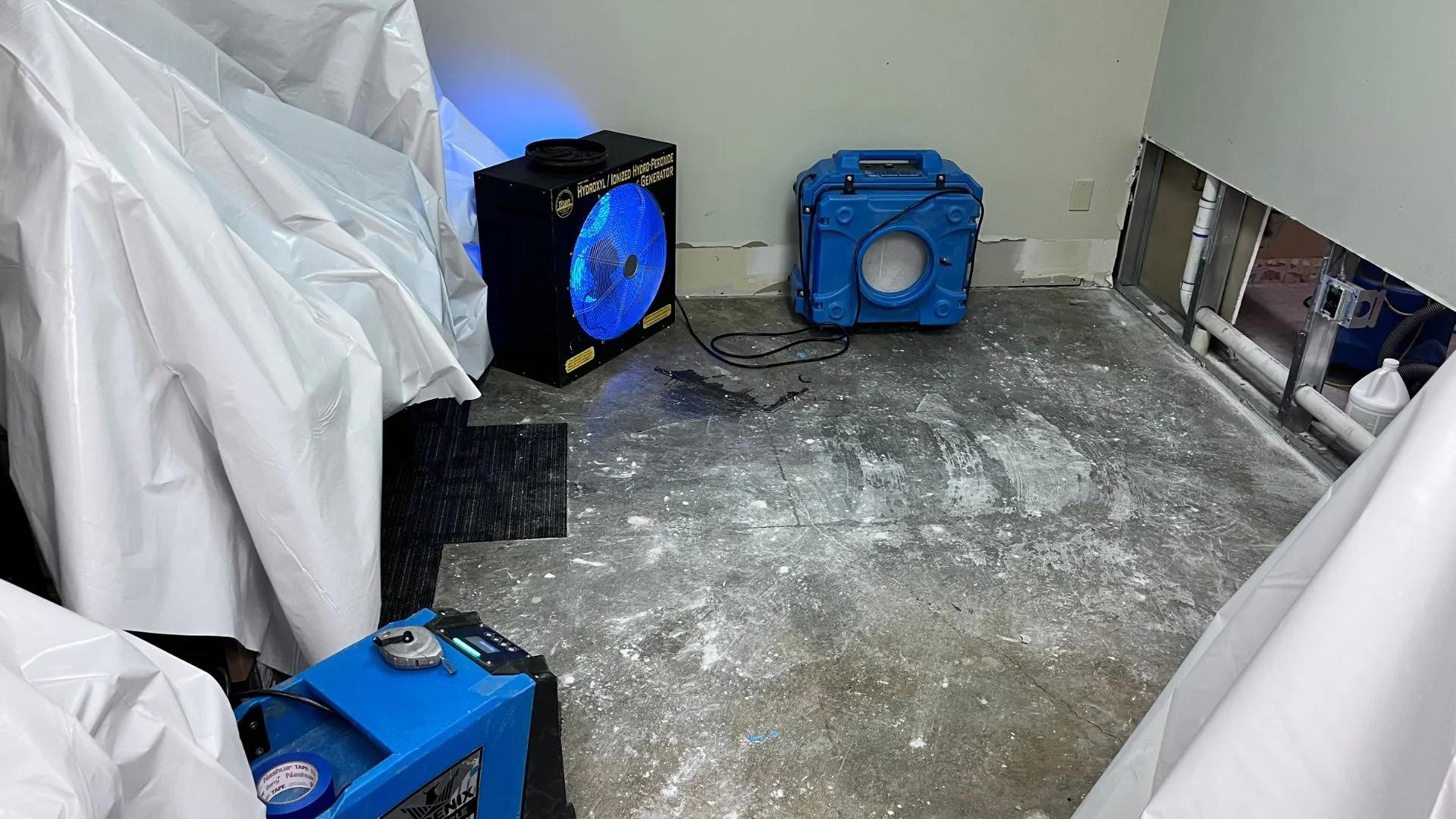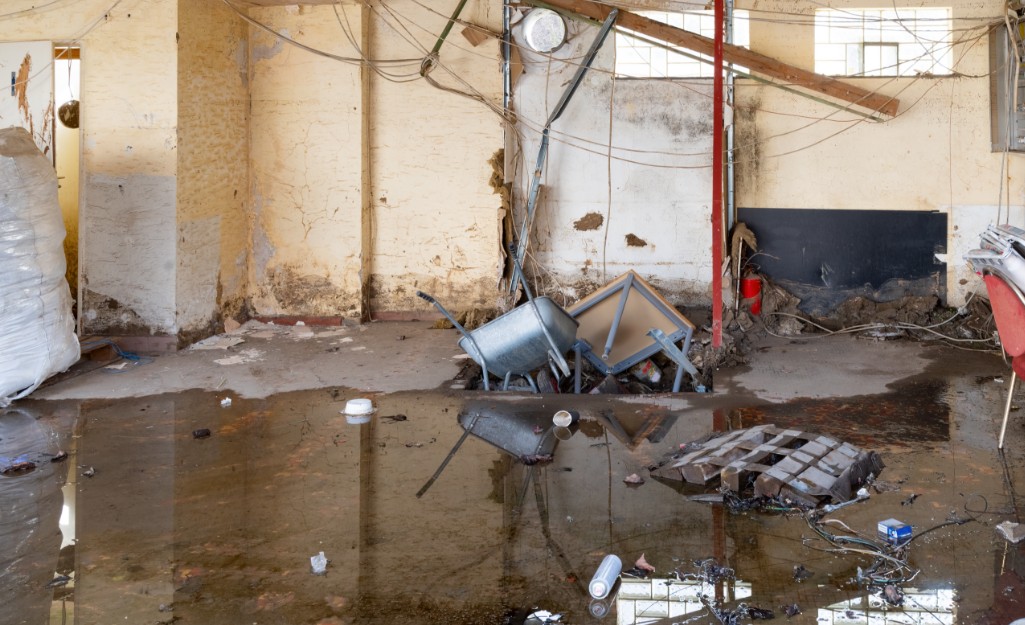Smoke Damage Restoration and Air Quality: What You Didn’t Know Could Hurt You
Vital Steps to Adhere To for Efficient Water Damage Reconstruction in your house
When faced with water damage in your house, understanding the important actions for reliable repair can make all the difference. You require to analyze the damages and assurance security prior to taking on the trouble. Stopping the source of water is crucial, but it's just the beginning. There's a collection of actions you have to take to protect your residential property from more problems once you've handled that. Allow's explore what you should do following.
Analyze the Damage
When you discover water damage in your house, the initial action is to analyze the damage thoroughly. Beginning by determining the resource of the water breach. Inspect for leaks, burst pipelines, or other concerns causing the trouble. Next, check out the influenced areas for visible indicators of damage, consisting of mold, warping, or staining growth. Do not neglect to look in concealed spots like behind walls or under flooring, as water can leak right into these locations unnoticed.Document the damage by taking clear pictures and notes. When reviewing the circumstance with your insurance provider or repair specialists, this will certainly assist you. Focus on the kind of products influenced, as various products call for various restoration approaches. Assess the extent of the damages. Is it considerable or small? Recognizing the range will guide you in deciding whether to manage it yourself or contact the experts for a more considerable reconstruction procedure.

Make sure Safety and security
Prior to you begin any remediation job, assuring your safety is crucial. Analyze the problem of your home. If the water's deep or if you notice electrical risks, do not get in the area. Switch off the electricity and gas supply to avoid crashes. Wear protective equipment like masks, boots, and gloves to shield yourself from impurities or mold.It's essential to stay knowledgeable about your surroundings; watch for slippery surface areas and sharp things. If the water is from a sewage back-up, treat it as contaminated materials. Keep family pets and kids away from affected locations to prevent exposure.Once you've taken these safety measures, you can wage the repair procedure. Keep in mind, your security comes initially, and if you're ever before unclear, it's ideal to speak with a professional. Taking these actions will certainly aid assure you prepare to tackle the remediation safely and properly.
Quit the Source of Water
After guaranteeing your safety and security, the following step is to stop the source of water. Recognize where the leakage is originating from. It can be a ruptured pipeline, a defective appliance, or perhaps heavy rain going into through a harmed roofing. If it's a plumbing concern, shut off the main water supply to your home to avoid more flooding. For appliances, disconnect them and turn off their water valves.If the source is outdoors, like rainwater, attempt to divert it away from your home making use of sandbags or other obstacles. For minor leaks, you could be able to use tape or a sealant momentarily till a professional can fix it. Bear in mind, dealing with the resource rapidly is vital to reducing damages and protecting against mold development. When you've stopped the water, you'll be in a much better position to carry on to the next steps in the restoration process.

Eliminate Excess Water
Act promptly to get rid of excess water, as standing water can bring about much more substantial damages and mold and mildew growth. First, collect your tools: a wet/dry vacuum cleaner, pails, and towels. If the water is shallow, you can use towels to take in the dampness. For deeper water, a wet/dry vacuum is your best bet. Ensure to clear the vacuum cleaner often to prevent overflow.If the water is infected, like from a sewer back-up, put on protective gear, including masks and handwear covers, to maintain yourself risk-free. As soon as you've gotten rid of as much water as possible, check for surprise pockets of moisture in edges and under furniture, as these can harbor mold.Don' t fail to remember to shut off electrical devices and power electrical outlets in wet locations to prevent dangers. This initial step is crucial in lessening damage and establishing the phase for a successful remediation process.
Dry and Dehumidify the Location
As soon as you've eliminated the excess water, it's important to dry and evaporate the area completely. Beginning by making use of dehumidifiers successfully to pull dampness out of the air and avoid mold and mildew growth. Watch on humidity levels to guarantee the room dries totally.
Remove Standing Water
To efficiently take on water damages, you require to concentrate on getting rid of standing water as quickly as possible. Begin by collecting essential devices, like a wet/dry vacuum cleaner or a pump, depending on the quantity of water. If the water is superficial, a vacuum ought to do the technique. For larger amounts, a pump is more effective. While functioning, see to it to wear safety equipment to maintain on your own risk-free from contaminants. As you remove the water, take notice of concealed locations like under furniture or in edges where water could gather. When you've gotten rid of the majority, your room will certainly start to dry out. This action is vital, as remaining water can bring about mold and mildew development and extra considerable damages.
Usage Dehumidifiers Effectively
How can you efficiently make use of dehumidifiers to completely dry and evaporate your room? Begin by placing your dehumidifier in the most damaged location, ideally where water damage is most extreme. Ensure to close all home windows and doors to create a covered atmosphere. Turn on the dehumidifier and established it to the appropriate moisture level, generally around 30-50%. Empty the water collection container often, or consider making use of a model with a continuous drainage option for ease. If possible, use followers to enhance air movement, assisting the dehumidifier work more effectively. Keep the dehumidifier running up until you're certain that the area is completely dried, avoiding mold development and added damages (Water Damage Restoration St George UT). This step is necessary for reliable water damages restoration
Screen Humidity Levels
Surveillance moisture degrees is important throughout the drying out procedure, as it helps ensure your area continues to be without excess dampness. Buy a reputable hygrometer to track moisture accurately. Ideally, you wish to keep degrees in between 30% and 50%. If humidity readings climb above this variety, you might need to change your dehumidifiers or followers to boost airflow. Examine the analyses frequently, especially in areas vulnerable to dampness, like shower rooms or cellars. Think about increasing air flow or utilizing extra dehumidifiers if you notice relentless high humidity. Remaining on top of these levels not just speeds up the drying out procedure but additionally stops mold and mildew development, guaranteeing your home stays risk-free and comfy.
Clean and Disinfect Affected Surfaces

Restore and Fix Your Home
After cleansing and disinfecting the influenced areas, it's time to restore and fix your home. Begin by assessing the damage. Look for architectural problems, like weakened floors or wall surfaces, and attend to any type of required repair services. Replacing harmed drywall or floor covering is necessary for both looks and linked here safety.If your furniture or possessions were influenced, think about whether they can be recovered or require substitute. Clean or expertly bring back products where possible.Next, paint wall surfaces and touch up any type of areas that need attention. This not just enhances appearance yet additionally shields surface areas from future water damage.Don' t forget to check your pipes and devices for leaks, ensuring everything's operating appropriately. Lastly, consider installing a dehumidifier to stop future moisture problems. By taking these actions, you'll restore your home to its previous splendor and develop a much safer living environment.
Often Asked Questions
How Much Time Does Water Damages Repair Normally Take?
Water damage reconstruction usually takes anywhere from a few days to numerous weeks, depending upon the level of the damage (Water Damage Restoration St George UT). You'll want to analyze the situation promptly to minimize more difficulties and guarantee proper remediation
Will My Insurance Coverage Cover Water Damage Remediation Expenses?
Your insurance coverage may cover water damages reconstruction prices, yet it relies on your plan. Examine your insurance coverage details and contact your insurance agent to clarify what's included and what you need to file an insurance claim.
Can I Take Care Of Water Damages Reconstruction Myself?
You can manage water damages reconstruction on your own, yet it's essential to analyze the scenario. You could want to call experts if it's substantial. Constantly focus on security and assure you've got the right tools.
What Are the Indications of Hidden Water Damages?
You could observe indications of hidden water damages like distorted walls, stuffy odors, or staining. If your floors really feel mushy or you spot mold and mildew, it's time to examine better before the situation gets worse.
How Can I Stop Future Water Damage in My Home?
To stop future water damage in your home, you need to frequently evaluate plumbing, seal cracks, preserve gutters, and warranty proper water drainage. Setting up a sump pump and wetness obstacles can additionally help keep your space dry. When you find water damages in your home, the initial look at this website action is to assess the damage completely. Act swiftly to eliminate excess water, as standing water can lead to more substantial damage and mold and mildew development. To effectively deal with water damages, you need to focus on getting rid of standing water as swiftly as feasible. As you eliminate the water, pay attention to concealed areas like under furniture or in corners where water might gather. Water damages restoration normally takes anywhere from a couple of days to several weeks, depending on the degree of the damages.